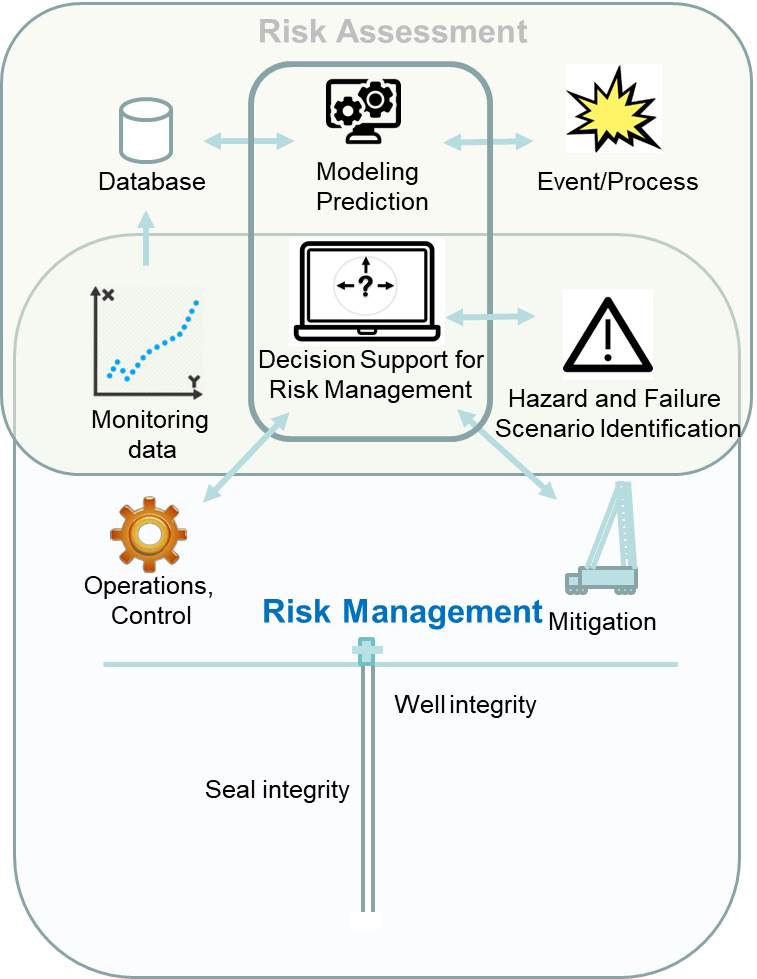The approach of IRMDSS is to merge mechanistic models with advanced monitoring technology for continuous reevaluation and assessment to provide indicators of potential threats. The three main components of the IRMDSS are:
- Analytical tools and mechanistic models
- to evaluate potential impact
- to evaluate mitigation strategies
- Data for updating models
- Operational data
- Near real-time monitoring data
- Supervisory interface
- To feed real-time data into the analytical tools for risk assessment
- To integrate all IRMDSS components
- To provide the key information needed to support decision-making
The IRMDSS framework provides capabilities for users to run mechanistic models and use monitoring data to analyze scenarios, and to update the models with new monitoring data.
Thanks to our project partner SoCalGas, the IRMDSS framework is demonstrated at the Honor Rancho Gas storage field.
Use cases – Lists of actions to be performed using IRMDSS components to address specific operational and failure scenarios. Use cases can be used to demonstrate the interactions among the system components, and for field demonstration of the IRMDSS framework. Below are a few examples of use cases:
- Use Case 1: Safe reservoir operation
- Use Case 2: Subsurface well leak: tubing
- Use Case 3: Ground deformation
- Use Case 4: Non-specific surface leak
- Use Case 5: Gas present on well-pad site
- Use Case 6: Subsurface well leak: casing
- Use Case 7: Subsurface leak outside of but adjacent to wellbore tubulars
(NOTE: Links to Use Cases are under development and will be added at a later date)
* * * * * * * * * *
Please contact Helen Prieto, HGPrieto@LBL.gov, for questions, comments or suggestions related to this website.
